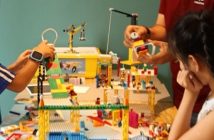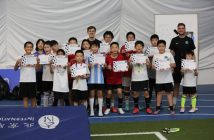
The latest buzzword among early childhood education experts is “creativity.” From educational websites to school curricula, you’ll be hard-pressed to find a reputable academic source that doesn’t acknowledge the growing value of creativity. But what exactly is all the fuss about?
“Creative” people used to be regarded as artistic by nature, but in recent years, creativity has come to be regarded as a quality that can be learned, challenging educators to come up with ways to help students acquire and develop these skills.
As the world becomes more interconnected, employees who are considered creative are particularly prized in the workplace; described as “innovators,” “problem solvers,” and “out-of-the-box thinkers.”
This enlarged definition of creativity guides teachers’ efforts to prepare their students for the real world. By encouraging them to become self-directed learners and critical thinkers, a curriculum that values creativity lays the groundwork for future success.
There’s no doubt that creativity is an asset, but how can parents tell whether a preschool program values this quality? Furthermore, what can they do to foster creativity at home?
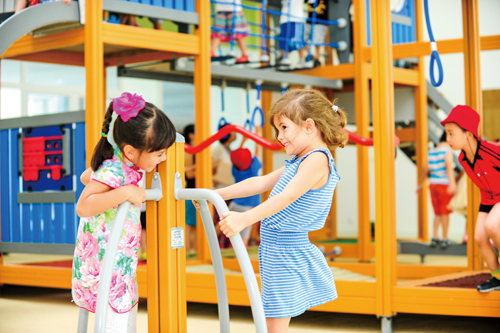
Let the Creative Juices Flow
Creativity is so prized in early childhood education circles that it became the theme of the first-ever International Preschool Education Conference (IPEC) in August. Sponsored by Etonkids Education Group, the weekend-long conference hosted international education experts for a series of talks and workshops.
The workshops encouraged the exchange of ideas between parents and teachers; topics included cultivating creativity through play, engaging ways to read to children, art and music education, and using coaching methods to encourage creativity.
We spoke with Dr. Heather Weiss, founder and director of the Harvard Family Research Project (HFRP) and a senior research instructor at the Harvard Graduate School of Education. HFRP’s mission is to improve practice, intervention, and policy to support children’s successful development from birth to adulthood.
Dr. Weiss believes that successful learning starts not at a prestigious school, but at home. “Some of the most disadvantaged kids are from the wealthiest families, and that’s because their families are making and spending money and the nanny is taking care of them,” she says.
She explains that parents who send their children to elite or private schools are often making a misguided decision; while they assume that the child will get the best education possible, the reality is that schools don’t always fully engage with parents. This leads to parents being unaware of their child’s learning difficulties and missing opportunities to be involved in their learning.
Though starting education early is essential, Dr. Weiss says parents should strongly consider a school’s willingness to engage with them when choosing a preschool program. “A good center won’t risk any separation of parent and child,” she says.
Look for the following: Does the school introduce the child to their new surroundings the start of school? Does the school try to engage (and continue to engage) parents in the child’s academic life? Does it facilitate regular conversations between teachers and parents about how to support learning at home?
In addition to engagement, Dr. Weiss says the most essential characteristic of a quality preschool program is building a transition to the next stage of education. Once the groundwork for learning is successfully laid, HFRP research shows that a child is far more likely to demonstrate innovation in later stages of schooling.
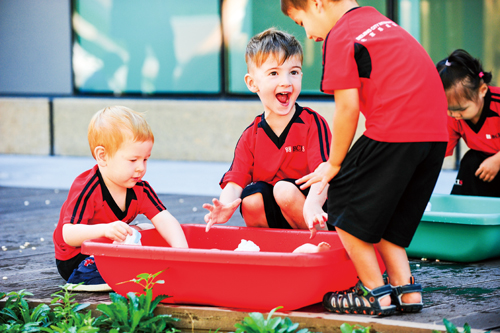
Creativity Keyholders: BCIS Gets in on the Act
So what might a quality preschool program look like? Let’s take Beijing City International School’s new Early Childhood Center (ECC) as an example. Opened to much fanfare in August, the ECC encompasses four levels divided by age group, beginning with the toddler program (age 2) all the way up to kindergarten (age 5). The ECC also boasts an environmentally-friendly gold LEED (Leadership in Energy and Environment Design) certification – the first preschool building in Beijing to hold this distinction.
Before school began, kids had an orientation day to get acquainted with their teachers. Currently, focus letters are sent home every few weeks detailing the child’s progress, interests, and social interactions. Additionally, each class has its own “EDU blog,” which allows parents to log in and see regular posts highlighting activities and lesson plans at each level. The school will also hold regular curriculum workshops so parents can experience what their children are learning.
The ECC facilities themselves were constructed with creativity and exchange in mind. Rather than being built on a grid, the building and its interconnected classrooms feature high ceilings and sweeping curves designed to promote a more open atmosphere.
“Fields are merging, so being creative and able to respond to change is important,” says Sara Shadravan, the principal of the ECC. “Putting kids in an environment where they start looking at things from different perspectives and taking their learning to another place is what we’re trying to facilitate.”
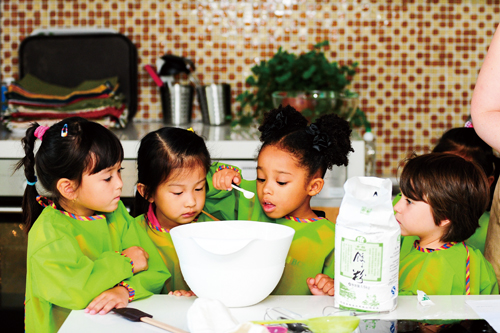
The ECC curriculum is based on the International Baccalaureate (IB) Primary Years Programme (PYP). Though the IB curriculum is largely based on skills and conceptual understanding, it’s up to teachers to structure their classes and personalize learning experiences for each child.
“Being given a framework and [the ability to]develop it allows us to create learning spaces where kids can be creative,” says PYP Coordinator Kate Mancarella. “It’s not this predetermined mass amount of knowledge that these kids need to learn by the time they leave.”
Technology serves as a valuable learning tool. Every day, children are assigned roles as either photographers or reporter, using iPods to take photos of learning topics. For instance, the “shape hunt” requires students to find and take pictures of all the shapes they can spot indoors and outdoors.
“We focus on giving [kids the]skills to be creative at school because when they go home, they’ll actually know how to think for themselves outside of a school setting,” says Mancarella.
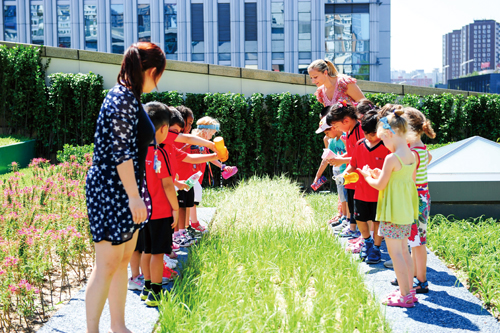
In addition, two “learning spaces” in the ECC – the indoor play structure and the rooftop garden – enable hands-on exploration. Teachers can re-configure the former to present different physical challenges for the kids, while the latter allows students to do their own gardening.
“The idea is to get them thinking about why we have plants and what we get from them, while another level [of learning is]looking after them,” explains Mancarella.
At home, incorporating simple changes can give young children a head start to thinking for themselves, which according to our experts is where creativity comes from.
Perhaps Dr. Weiss sums it up best when she says: “At the core of creativity is thinking about something differently and having new ideas. More than ever, we can use our differences to solve a lot of problems and learn from each other. What we really need is to recognize and value differences, to enable both individual and collective creativity in the service of making it a better world.”
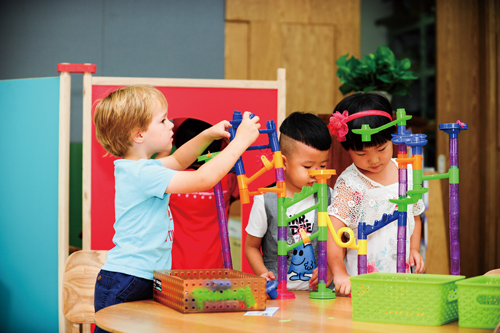
The Dos and Don’ts of Fostering Creativity at Home
Here are some suggestions from Dr. Weiss, Shadravan, and
Mancarella for encouraging creativity at home:
Do:
Play with your kids: Do outdoor activites like enjoying open-ended activites at the park as a family. “The idea is that kids don’t go just home, sit down and do math or activity after activity,” says Mancarella.
Make storytime count: Read interactively with your child. Ask them questions, pay special attention to interesting or colorful words, and encourage them to tell the story.
Cook together: Have younger kids participate in daily routines. “Sometimes it’s the little things that really count. As children learn independence, they get excited about everyday tasks and start applying their skills,” says Shadravan.
Engage in digital media: While many parents worry about the effects of too much screen time, Dr. Weiss sees technology as a key tool for shaping learning. “Kids are going to get involved with digital media anyway. Why not create spaces where parent and child are sitting together to use this as a tool for learning?”
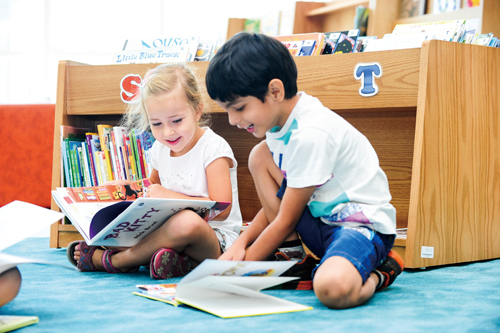
Don’t:
Do everything for them: Having an ayi is convenient, but it can create a situation where many things are done for your child, which sends them the message that they’re incapable of performing tasks. “When we let kids do things independently, creativity will start to happen because there’s a new situation that they have to think about and problem solve,” says Mancarella.
Focus on perfection: Parents have the tendency to show children exactly how something is done. Instead, encourage creative thinking by giving kids the freedom to come up with their own solution. “If there isn’t an outcome or anything pre-determined, they don’t have to fear failure,” says Shadravan.
Overschedule: Overstimulation can inhibit creativity because kids don’t have time to simply reflect or daydream. Shadravan suggests playing games that require kids to use their imagination instead of breaking out the iPad. “Lie on the ground at the park on a clear day, look at the clouds and think about what animal you see, play ‘I Spy,’ or make shadow animals,” she suggests.
Direct playtime: It can be tempting for parents to turn playtime into a learning opportunity, but resist the urge as it robs kids the chance to create their own stories. The next time your child wants you to join in a tea party with their stuffed animals, just go with it.
Resources
To learn more about engaging early childhood creativity, visit the following websites.
BCIS Early Childhood Center (ECC)
11 Dongbai Jie, Chaoyang District (6770 0766) www.bcis.cn 朝阳区东柏街11号
Joan Ganz Cooney Center
Named after Sesame Street Co-Founder Joan Ganz Cooney, the center aims to enhance learning through digital media. The website provides up-to-date reports and articles about techniques for engaging with kids. www.joanganzcooneycenter.org
James Mackenzie Wright
One of the speakers at IPEC, Wright lectures around the world on coaching and innovation in education. Emphasizing mutually respective communication, his website provides tips for “growing confident and cheerful children.” www.jameswright.eu/blog
Reading Rockets
International Educational Consultant Dr. Julie M. Wood spoke at IPEC about methods and strategies for engaging children in reading. She is a guest blogger for Reading Rockets, an American multimedia initiative that offers information and resources on how younger children learn to read, why so many struggle with their learning, and how adults can help. www.readingrockets.org
Harvard Family Research Project
Since 1983, the Harvard family Research Project has helped develop and evaluate strategies to promote the well-being of youth, families,
and their communities. The website offers research and case studies on early childhood education, family involvement, quality after-school time, and complementary learning. www.hfrp.org
This article originally appeared on p42-45 in the October 2014 issue of beijingkids. To view it online for free, click here. To find out how you can obtain your own copy, email distribution@truerun.com.
Photos: Courtesy of BCIS

